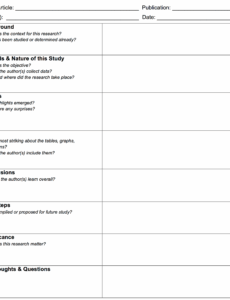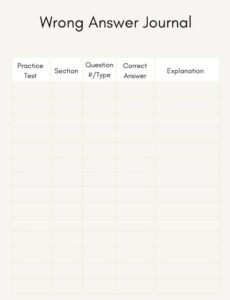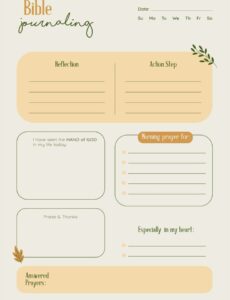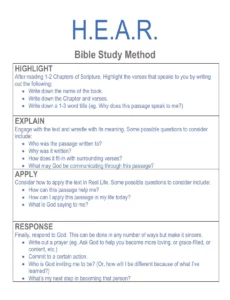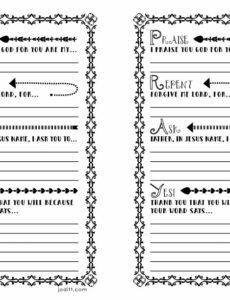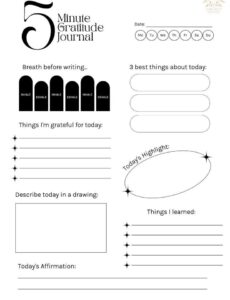Are you looking for an engaging way to help your first grader dive deeper into the world of numbers and shapes? Math journals are an incredible tool, offering a unique space for young learners to not just solve problems, but to think, draw, and write about their mathematical understanding. It transforms math from a series of correct answers into a journey of discovery and expression.
If you’re looking for a powerful tool to boost your first grader’s understanding and engagement with numbers, a well-designed first grade math journal template is your answer. It helps structure this exploration, ensuring that students cover key concepts while developing crucial communication and critical thinking skills. It’s more than just a notebook; it’s a window into their learning process.
Why a Math Journal is a Game Changer for First Graders
Moving beyond simple worksheets, a math journal invites children to interact with mathematical concepts in a more personal and reflective way. Instead of just writing down an answer, they are encouraged to show their work, explain their reasoning, and even express any confusion they might have. This process of externalizing their thoughts helps solidify their understanding and flags areas where they might need extra support. It truly shifts the focus from rote memorization to genuine comprehension.
For first graders, whose brains are rapidly developing, the ability to connect abstract numbers to concrete experiences is vital. A math journal provides a consistent platform for them to make these connections through drawing, modeling with manipulatives (and then drawing about it), and even simple storytelling. This multi-modal approach caters to different learning styles and deepens their grasp of foundational math skills. It also builds confidence as they see their own progress unfold page by page.
Furthermore, a math journal acts as a fantastic communication tool. For teachers, it offers invaluable insights into each child’s thinking process, revealing not just what they know, but how they know it. For parents, it provides a tangible record of their child’s learning journey, making it easier to support their academic growth at home. It fosters a collaborative environment where everyone involved can celebrate successes and address challenges together.
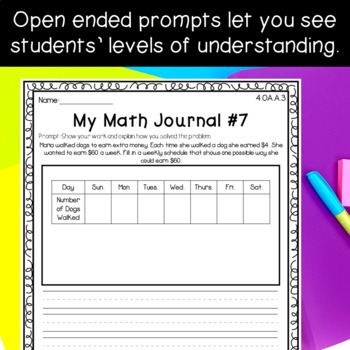
The consistent practice of journaling in math also cultivates important habits like organization, attention to detail, and independent thinking. It empowers young learners to take ownership of their education, encouraging them to question, explore, and articulate their thoughts with increasing clarity. It’s an investment in their long-term mathematical fluency and confidence.
Building Foundational Skills
- Encourages deeper understanding of concepts.
- Fosters critical thinking and problem-solving abilities.
- Develops mathematical vocabulary and clear communication.
- Provides a visual and written record of learning and growth.
Crafting Your Perfect First Grade Math Journal Template
Designing an effective first grade math journal template doesn’t have to be complicated. The key is to keep it age-appropriate, flexible, and inviting. You want a template that guides their thinking without stifling their creativity. Think about providing clear sections for different types of responses while leaving ample open space for drawings or individual expression. A good template will become a familiar friend in their daily math routine.
Consider including specific areas for the date and the topic being explored, which helps both the student and anyone reviewing the journal to quickly understand the context. A dedicated space for the math problem or prompt itself is essential, followed by generous room for the child to show their work. This could be through drawing pictures, using tally marks, representing numbers with blocks, or writing out a number sentence.
An important element to incorporate is a section for written explanation or reflection. Even if it’s just a sentence or two, encouraging first graders to articulate their thought process in words is incredibly beneficial. They might write “I drew three circles and then added two more” or “I know 5 plus 5 makes 10.” This not only reinforces their understanding but also strengthens their early literacy skills by connecting math to language.
Finally, think about adding a small self-assessment feature, like a simple “How do you feel about this problem?” with a space to draw a happy, neutral, or confused face. This encourages self-reflection and provides an easy way for students to communicate their level of understanding without having to verbalize it directly. It’s a gentle way to introduce metacognition and empower them to identify their own learning needs.
- Date and Topic Area: Helps organize content and learning progression.
- Problem Space: Clear area for the specific math task or prompt.
- Drawing and Modeling Area: Encourages visual representation of concepts.
- Writing Space: For explanations, reflections, or new vocabulary.
- Self-Assessment Box: A simple way for students to communicate understanding.
Incorporating a math journal into your first grader’s learning journey can truly transform their experience with mathematics. It moves beyond passive learning, empowering them to become active participants in building their own understanding. By providing a structured yet creative outlet, you’re not just teaching them numbers; you’re nurturing critical thinkers and confident problem-solvers.
Embrace the power of reflection and expression that these journals offer. Whether you use a pre-made design or craft your own template, the benefits of giving first graders a dedicated space to explore and articulate their mathematical thoughts will be evident as they grow in skill and enthusiasm for the subject. It is a wonderful way to foster a lifelong love for learning.
